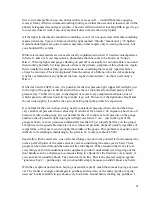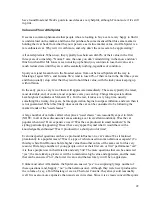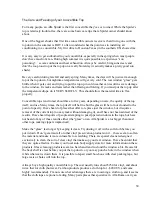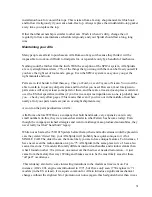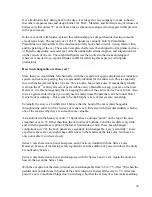
27
While Alfa started out taking the regulations very seriously (the SPICA system was a high-
performance induction system adapted to cope with the American emissions regulations), they,
like just about every European manufacturer except the Germans (who are culturally inclined to
take everything seriously), seemed to have grown impatient and frustrated with the US
government as time went on. Series 2 2.0L cars were equipped with
”
smog
„
camshafts, and
Series 2a cars, with their ugly, poorly integrated bumpers, and their progressively strangled
engines, seem to be the result of Alfa running out of time, patience, and money with the US
market.
Because of this, the owner of a stock Series 2 or 2a can in fact noticeably (and, in the case of 2a
owners, substantially) improve the performance of their cars through the
”
bolt-on
„
approach.
Actually, you get it as much from what you
”
bolt-off
„
the air pump, catalytic converter, and
exhaust manifold can all be removed, resulting in substantial performance gains (well, you will
have to replace the exhaust manifold with an earlier style system). Series 2 2.0L Spiders can be
fitted with European-spec camshafts from either 2.0L or 1750 engines. Cars still equipped with
SPICA systems can be converted to Webers or, even better, retrofitted with a high-output pump
from 1974 (this keeps the car legal on equipment inspections). Many of these modifications will,
of course, make your car illegal in states that perform emissions inspections (however, many
states do not inspect cars over 20 years old
check your local laws).
But even a Series 2a owners should look to what the factory did as a guide to what they should
do. Exhaust manifolds, camshafts, induction systems, exhaust systems, etc. should all be
modified backward toward a Series 2 car (1973-1974).
Even though it is apparently very difficult to modify the 2a
“
s appearance to make it resemble a 2,
I often wonder if there wouldn
“
t be a market for fiberglass
”
bumper replicas
„
that were designed
to be fitted to the 2a
“
s mounting hardware. This would result in a large savings in weight. To my
knowledge no such devices exist.
Tires and wheels are also another well-known area of improvement. Common knowledge in
America, to quote a different car maker
“
s advertising, is
”
wider is better
„
. To some extent, this is
true with Alfa Spiders as well. Indeed, contemporary reviews of Series 1 and 2 cars, especially
the 1750 and Series 2 2000, often noted that performance was noticeably hampered by the cars
“
smallish tires. So, it would actually seem that wider is better.
However, the car
“
s
”
flexible flyer
„
chassis, especially before the frame-stiffened Series 3
premiered in 1983, works against getting good performance from too big of a tire. I have
personally caused bodywork damage to my Series 2 Spider by fitting too-large tires (the rockers
tend to tear apart at the front corner of the door, causing rust to fester).
So, which size is right for you? It depends a great deal on which model year you own, and what
you do with the car. The most commonly fit size seems to be 175 or 185/70-14s. However, it is
my experience that a Series 2 2000 is simply too powerful for such a narrow tire, making them
very prone to wheelspin, especially in the rain. 205/60-14 seems to be the biggest size you can









